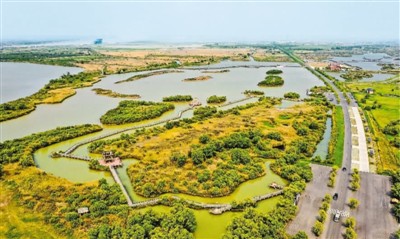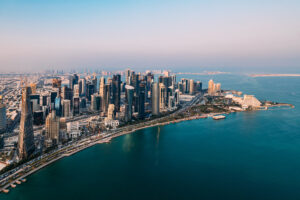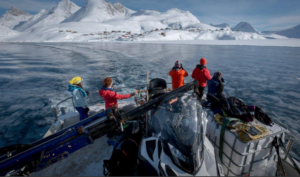Ecotourism industry in China thrives nationwide

Ecotourism, a form of tourism involving responsible travel to natural areas, conserving the environment, and improving the well-being of the local people, has become one of the key green industries in regions across China, driving local economic development while changing people’s lifestyles.
Ecotourism is becoming a favored choice for Chinese people, as they now prefer to visit places that have thick forests and plentiful vegetation as well as being rich in negative ions.
Camping, hiking, bird-watching, and other activities that can embrace nature are becoming increasingly popular among Chinese tourists.
According to China’s Ministry of Culture and Tourism, recreational vehicle camping and road trips to nearby destinations were popular during this year’s National Day holiday, which ran from Oct. 1 to 7.
A report issued by Chinese e-commerce giant Alibaba showed that sales of camping products on its online marketplace Tmall surged more than 50 percent in September from a year earlier, while the booking volume for tents and camping trips on its online travel service provider Fliggy soared by over 1,400 percent from a month ago.
Recently, the department of ecology and environment in east China’s Zhejiang province unveiled an “ecotourism map”, which consists of 21 ecotourism sites, in order to meet people’s growing demand for diversified ecotourism products.
Selected from the province’s education centers displaying achievements in ecological civilization, these sites include wetland parks, beautiful villages, cultural facilities, forest parks, nature reserves, agricultural parks, and scenic spots in 11 cities. The move will promote the development of local ecotourism.
Meanwhile, more and more tourism roads that connect ecotourism sites are emerging across China. The transportation department of southwest China’s Sichuan province recently unveiled an official list of its most beautiful rural roads, which include the Zengjiashan ecotourism ring road in the Chaotian district of Guangyuan city.
Flanked by forests, the road passes by several tourism attractions and villages while serving as a corridor that integrates tourism and featured industries. As a popular leisure destination for tourists, the road is leading local residents in the direction towards a wealthier life.
At present, China’s local governments are also pursuing the high-quality development of the ecotourism industry by rationally exploiting ecotourism sources, such as nature parks, in addition to launching more ecotourism products.
Northwest China’s Shaanxi province recently unveiled six ecotourism routes, combining the province’s ecotourism sites to feature red leaves, forests, and rare wild animal species, including giant pandas, crested ibises, golden monkeys, and takins.
Shaanxi will speed up the development of its quality ecotourism routes and forest-based industries by making full use of its ecological resources on the premise of ensuring ecological safety.
Lucid waters and lush mountains are invaluable assets for the development of the country’s ecotourism industry. Statistics show that China has seen its growing forest coverage rate reach and exceed a level of 23 percent.
Between 2000 and 2017, China contributed to about 25 percent of global vegetation growth, the biggest share among all countries. Meanwhile, the proportion of the country’s surface water rated with a “good” quality nationwide increased to 83.4 percent. – People’s Daily Online
28 October 2021
Photo : A view of the Yellow River Delta National Nature Reserve in east China’s Shandong province. (Xinhua/Guo Xulei)















